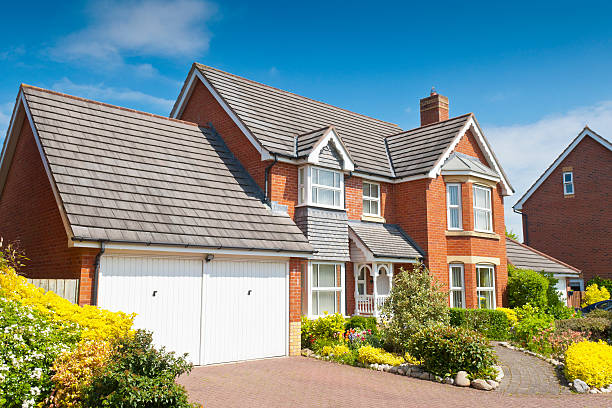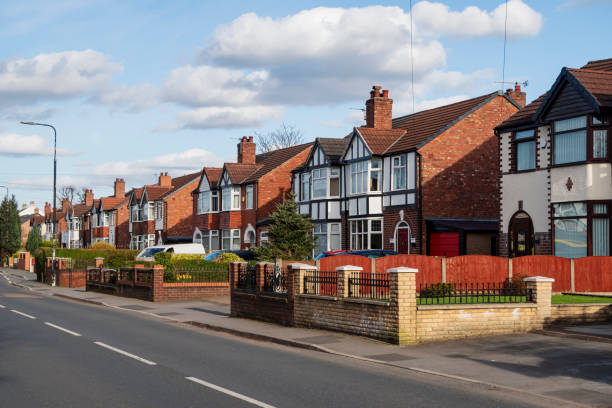In the ever-evolving canvas of architecture, the exterior render serves as the face of a structure, weathering time and the elements.
This guide is your key to unlocking the secrets of restoration and rejuvenation, offering a meticulous journey into the art of rendering maintenance. From expert cleaning techniques to revitalising treatments, embark on a transformative exploration that unveils the beauty hidden beneath layers of wear.
Discover the power of renewal as we guide you through the steps to breathe new life into your rendered surfaces, ensuring they stand the test of time with enduring allure. Learn practical strategies to clean render and explore specialised methods, including the nuanced process of cleaning render with bleach for a comprehensive approach to rendering revitalisation.”
Understanding Rendered Surfaces
Composition and Types:
Render is a mixture of cement, sand, and other additives applied to external walls for protective and decorative purposes. Different types of render, such as traditional sand and cement render, acrylic render, or silicone render, have varying compositions that influence their appearance and durability.
Vulnerabilities to Contamination:
Rendered surfaces are exposed to various contaminants, including dirt, algae, moss, pollution, and atmospheric impurities. These elements can accumulate over time, diminishing the visual appeal of the render and potentially impacting its structural integrity.

Cleaning Methods for Render
Soft Washing:
Soft washing involves using low-pressure water and specialised suitable cleaning solutions to remove dirt, algae, and other contaminants. This method is effective for delicate render surfaces, preventing damage caused by high-pressure washing.
Pressure Washing:
Pressure washing utilises higher-pressure water to clean stubborn stains, rust, moss, and algae. While effective, it requires careful application to prevent damage to the render. Adjusting the pressure and using appropriate nozzles is essential to avoid erosion.
Chemical Cleaning:
Chemical cleaning involves the application of specific cleaning agents tailored to dissolve and remove particular contaminants. Algae and moss, for example, can be treated with biocidal and biocide solutions to inhibit regrowth and remove green algae and any ivy.
Brush and Scrub:
Manual cleaning using brushes, sponges, or scrubbers may be necessary for localised stains or areas with intricate detailing. This method allows for precise control and is often used with cleaning solutions for optimal results.

Factors to Consider Before Cleaning
Render Type and Condition:
Different render types may respond differently to cleaning methods. Understanding the specific render type and its current condition is crucial in selecting the most appropriate cleaning approach, ensuring that your exterior remains in optimal condition, looking its best.
Age and Vulnerability:
Older renderings or surfaces with existing damage may require gentler cleaning methods to avoid exacerbating issues. Careful consideration of the age and vulnerability of the render is essential in planning a successful cleaning strategy.
Environmental Impact:
Choosing environmentally friendly cleaning agents aligns with sustainable practices. Consideration of the environmental impact is vital, especially when dealing with runoff water and potential contamination.
Protecting Surrounding Areas:
Before initiating the cleaning process, protecting surrounding vegetation, landscaping, and adjacent surfaces from the cleaning agents or runoff water is imperative. Covering plants and using protective barriers helps mitigate potential damage.
Revitalising Rendered Surfaces
Repairing Damage:
Before revitalisation, assess the render for cracks, chips, or damage. Addressing these issues through patching or repairs ensures a smoother, more resilient, visually appealing finish that stands the test of time.
Painting and Color Restoration:
Applying a fresh coat of paint or a coloured render can revitalise the appearance of the surface. This covers imperfections and provides an opportunity to update the colour scheme and enhance the overall aesthetic.
Sealing and Waterproofing:
Consider applying a protective sealant or waterproofing treatment to the rendered surface. This helps guard against future contaminants, extends the life of the render, and enhances its resistance to weathering.
Specialized Treatments:
Depending on the render’s specific issues, specialised treatments such as anti-algae or antifungal coatings may be applied. These treatments provide an extra layer of protection against fungus and algae growth and contamination.

Maintenance Practices for Prolonged Renewal
Regular Inspections:
Conduct routine inspections of the rendered surfaces, such as walls and facades, to identify early signs of contamination, damage, or wear. It is crucial to restore and re-render the surfaces as needed. Prompt action can prevent issues from escalating and reduce the need for extensive cleaning.
Additionally, ensure that restoration and re-rendering are carried out at least once a year to maintain the integrity and appearance of the surfaces.
Gentle Cleaning Routines:
Implementing gentle cleaning routines, such as soft washing or manual brushing, at regular intervals can prevent contaminants’ buildup and preserve the render’s renewed appearance.
Landscaping Considerations:
Strategic landscaping, such as trimming overhanging branches or adjusting sprinkler systems, can help minimise the impact of environmental factors on the rendered surfaces.

Takeaways
- Utilise gentle cleaning agents, soft brushes, or pressure washers with caution to maintain the integrity of the render.
- Selecting the right cleaning agents and revitalisers can significantly enhance the appearance of the render while protecting it from environmental factors.
- Regular inspections and timely cleaning not only preserve the aesthetics but also contribute to the overall durability of the render.
FAQs
How often should I clean my rendered surfaces?
The frequency of cleaning depends on various factors such as climate, location, and the render type. However, as a general guideline, it is recommended to inspect and clean rendered surfaces at least once or twice a year to prevent long-term damage.
Can I use any cleaning product on rendered surfaces?
No, it’s crucial to use cleaning products specifically formulated for rendered surfaces. Using the wrong products may damage the render or compromise its protective coating. Always check the manufacturer’s recommendations and test a small, inconspicuous area before applying any new cleaning product.
What is the best way to deal with stubborn stains on rendered walls?
Persistent stains may require special attention. Start with mild cleaning solutions and, if necessary, gradually escalate to stronger agents. However, be cautious not to damage the render. If unsure, seek professional advice or consult the render manufacturer for recommended stain removal techniques.
The Sum Of It All
Revitalising rendered surfaces is a multifaceted process that involves cleaning, repairing, and enhancing the aesthetic appeal of buildings. Whether dealing with traditional sand and cement render or modern acrylic and silicone renders, understanding the specific characteristics and vulnerabilities is paramount.
Property owners can breathe new life into their rendered surfaces by adopting appropriate cleaning methods, such as cleaning render with bleach, addressing damage, and implementing protective measures, ensuring they stand the test of time while maintaining their visual allure.
Regular maintenance practices further contribute to the prolonged renewal of these surfaces, preserving the investment and beauty of architectural exteriors. How to clean render becomes a crucial aspect of this overall maintenance strategy.



